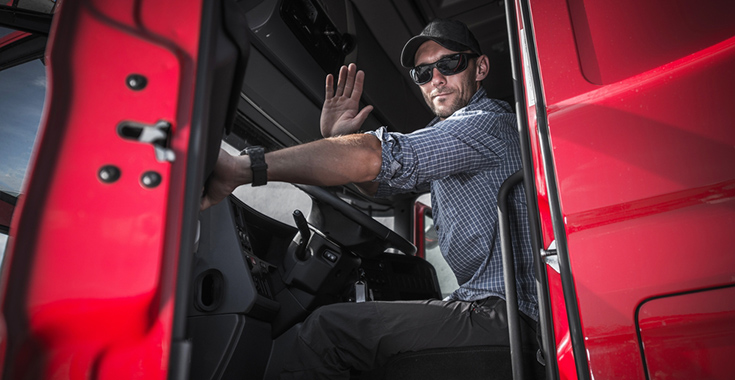To operate a commercial motor vehicle (CMV) in interstate commerce, drivers must meet several criteria. These include being physically qualified to drive a CMV; at least 21 years of age; and able to speak and read English, among meeting other standards.
Those are the general requirements under Federal Motor Carrier Safety Regulations. When a motor carrier considers an applicant for a driver position, the law requires that every one of those boxes be checked. However, most motor carriers go far beyond FMCSA requirements in their pre-employment screening of truck drivers.
Carriers have a number of available resources to help choose drivers wisely. The Federal Motor Carrier Safety Administration’s (FMCSA) Drug and Alcohol Clearinghouse, for example, reveals reported substance abuse violations since January 2020. FMCSA’s Pre-Employment Screening Program (PSP) provides a commercial driver’s five-year crash history, and three-year inspection history.
But how do hiring experts at motor carriers rate best practices for truck driver pre-employment screening?
The Virginia Tech Transportation Institute (VTTI) asked that question in an online survey of 40 safety-conscious managers from various types of CMV operations. While VTTI notes that a small sample cannot be applied across the commercial motor vehicle industry, the results are instructive, with recent events suggesting that one practice may rise in importance.
Ranked in order of effectiveness, the pre-employment screening techniques that were found be the most effective are:
- Performance or skills testing. Can the applicant do the job? Respondents said there was no substitute for the “real thing” – the DOT road test or at least range/yard/lot maneuvering tests. Driving simulators and written tests were not regarded as effective.
- Background checks. What is the applicant’s driving record? Motor carriers turn to the state driver licensing agency or FMCSA’s PSP program to get the answer. Other types of background checks – criminal, credit, military discharge – were generally regarded as less effective and seldom used to identify safe drivers.
- Drug screening. Is this applicant a substance abuser? Pre-employment drug tests are required, as is a check of the FMCSA Drug and Alcohol Clearinghouse. No one, after all, wants to place an unsafe driver behind the wheel of a CMV.
- Personality testing. Is this person a good fit for the job? Analysis has shown a relationship between key personality traits and crash risk. But this pre-employment practice is less utilized.
- Medical examination. Is the applicant healthy? Certain medical conditions, detected by the Commercial Driver Medical Exam (CDME), increase crash risk. Most motor carriers accept the CDME results as authoritative.
- Physical ability testing. Can the applicant load and unload? Health and fitness tests may reveal the likelihood of physical injury on the job.
- Social media screening. None of the survey respondents used this technique, regarding it as too time-consuming and an invasion of privacy.
It is worth noting that this third item, drug screening, may quickly rise in importance among the pre-employment screening best practices. The Drug and Alcohol Clearinghouse report for June 2020 included figures on drug test refusals among the violations reported.
Thirteen percent of the pre-employment drug test violations resulted from outright refusals to take the test. Those job applicants obviously failed to get hired. But after the three to five days it typically takes drugs to clear the system for urinalysis, those applicants could apply at another motor carrier. If hair testing gains approval as a DOT drug test method, drug use could be detected for 90 days. At that point, pre-employment drug screening becomes far more difficult to avoid.
Put simply, the motor carriers surveyed by VTTI want drivers who are capable, safe and drug-free. The pre-employment techniques they rate most effective answer three questions: “Can you drive? Do you drive safely? Do you use drugs? ” Honest, reliable answers to those questions are what motor carriers truly seek.
